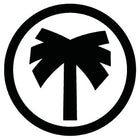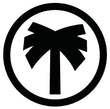20 products
Sorry, there are no products in this collection.
Here you can find the blog post about the bodyboards.
Bodyboard size : A rule of thumb is that the standing board should reach approximately belly button height. The width of the board should be such that you can just hold it under your armpits when carrying it. Of course, it not only depends on your size, but also on your weight. Many manufacturers provide information about which size is suitable for whom.
Elements of a bodyboard : As with a surfboard, there are also different shapes for bodyboards. The shape of the board doesn't change so much, but rather the individual elements that differ. Here are two elements that influence the properties of the bodyboard, among other things.
Tail : A core element when it comes to the shape of the bodyboard is the tail. In general, the wider the tail, the more control. In return, a narrower tail makes the board more agile and therefore more suitable for tricks.
| Bat-Tail : Shaped like a bat wing. This tail shape provides extreme flexibility and is ideal for doing tricks. To make the board glide more smoothly, bodyboards with bat tails often have recesses on the underside of the board. Ideal for belly riders. | Crescent Tail : Shaped like a "u", partially drawn across the entire tail. Gives the board stability when riding and glides more smoothly through the water. This makes it suitable for beginners as well as for steep waves. So if you want to ride on your knees or in tubes, you should go with a Crescent Tail. |
Rail: Similar to surfboards, the type of edges is also crucial for bodyboards. The same applies here: the flatter the edge angle, the faster the board is and the steeper the angle, the more grip you have in the wave. After all, it is an edge that hangs in the wave and thus keeps you in the direction of travel. There are 3 types of rails, which are distinguished by the ratio of the edges separated by the edge:
 |
 |
| 60/40: The most famous design of the rails. The portion below the edge is slightly larger than the portion above. Offers good control and proves to be an optimal solution for all conditions | 50/50: This type of rail is intended to provide more speed and is suitable for larger and steep waves. The edges ensure that the board digs into the wave extremely, making it difficult to ride in smaller waves. |
Installing a leash: The better bodyboards are delivered without a leash and can be ordered individually. Where you attach the leash is up to your preferences. However, most people will install the leash in the middle of the front. The procedure is as follows:
- Move down about 20cm from the tip and use a screwdriver to push straight through the board to the slick (underbody). If you heat the screwdriver with a lighter beforehand, it will be easier.
Note: If the board contains a center stringer, simply choose the puncture hole about 3cm to the left or right of the stringer.
- To break through the slick, all you need to do is hit the screwdriver. Now insert the plug into the shaft and screw it tight.
- Make sure that the plug presses slightly into the material so that everything is sealed watertight.
Wearing a leash : There are two options for where you can attach the leash. Either it's the wrist or around the upper arm. Most people wear the leash around their upper arm, which makes it less annoying, but a little more difficult to attach.
Bodyboarding Fins : Bodyboarding without fins is almost impossible. They will help you with every aspect of bodyboarding. When paddling out, paddling into the waves, steering and controlling the board. The fins are your fins, paddles and oars at the same time. In addition to the board itself, the fins are certainly the most important thing about the whole thing. Of course you can also jump into the white water in knee-deep water without fins, but at some point you just want to go to the waves.
Materials: Today's bodyboard is made of the rigid foam polyethylene (PE for short) or polypropylene (PP for short).
- PE is more suitable for colder waters and is therefore more suitable for European waters. Exists in different degrees of hardness and is the most common material. In order to achieve the desired rigidity, manufacturers use specially constructed cores.
- PP is a denser material and more suitable for warmer waters. In cold water, the stiffness of the PP board increases, which can result in the necessary flexibility being lost. Due to its density, PP is less sensitive to water penetration and more durable than PE. But the material is extremely expensive.
- EVA (foam polystyrene) is the cheapest material and, depending on the processing, can be used to make bodyboards. However, the replicas from the supermarket are only partially suitable for bodyboarding and are not suitable for waves.



